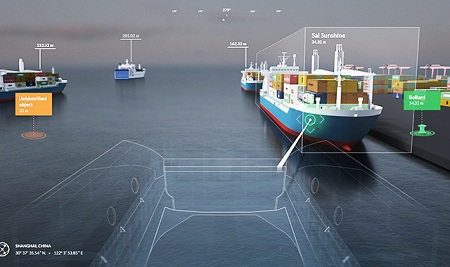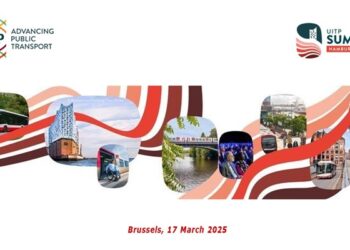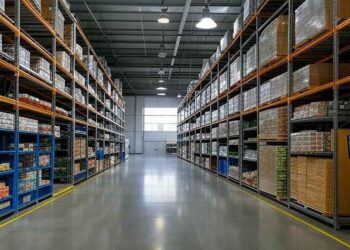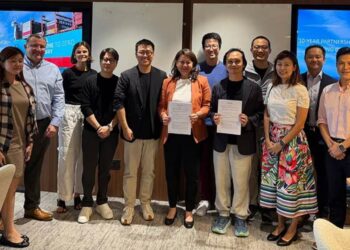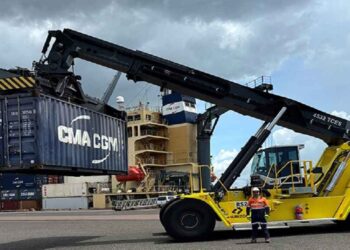Rolls-Royce has signed a deal with Swedish ferry company Stena Line AB, to collaborate in the development of its first intelligent awareness system.
Intelligent awareness systems will make vessels safer, easier and more efficient to operate by providing crew with an enhanced understanding of their vessel’s surroundings. This will be achieved by fusing data from a range of sensors with information from existing ship systems; such as Automatic Identification System (AIS) and radar. Data from other sources, including global databases, will also have a role.
Asbjørn Skaro, Rolls-Royce, Director Digital & Systems – Marine, said: “We have been exploring and testing how to combine sensor technologies effectively and affordably for some time. Pilot projects such as this will allow us to see how they can be best adapted to the needs of a commercial vessel and its crew and allow us to develop a product which better serves both.
“Successful pilots and product development programmes are also an important step towards the further development of remote and autonomous vessels and meeting our goal of having a remote controlled ship in commercial use by the end of the decade.â€
Harry Robertsson, Technical Director at Stena Teknik, expert technical advisors to the Swedish ferry company, said: “Stena Teknik continuously conducts research and development in the marine technology sector. This project gives us an opportunity to explore how new technologies can be integrated with the systems we already have on-board and to provide a more informed view of a vessel’s surroundings in an accessible and user friendly way. This will give our crew an enhanced decision support tool, increasing the safety of our vessels.â€
Rolls-Royce expects to be able to undertake an Approval of Concept and have its intelligent awareness product commercially available later in 2017.
The system builds on experiences from R&D work worldwide. The intelligent awareness system will benefit from Rolls-Royce’s extensive experience in the Tekes funded project Advanced Autonomous Waterborne Applications Initiative (AAWA), which has been running since June 2015. The company has been conducting a series of tests of the sensor arrays in a range of operating and climatic conditions on board Finferries’ 65 metre double ended ferry Stella, which operates between Korpo and Houtskär in the Archipelago Sea on the southwest coast of Finland.
About Rolls-Royce and autonomous shipping
Rolls-Royce is pioneering the development of remote controlled and autonomous ships, applying technology, skills and experience from across its businesses with the ambition of seeing a remote controlled ship in commercial use by the end of the decade. Rolls-Royce’s experience in secure data analytics across civil aerospace, defence, nuclear power and marine; coupled with its ship intelligence capabilities, design, propulsion and machinery expertise means it is ideally placed to take the lead in defining the future of shipping, in collaboration with industry, academia and Government.
The Marine division of Rolls-Royce already has strategic partnerships with the VTT Technical Research Centre of Finland, Tampere University of Technology (TUT), Norwegian University of Technology and Science (NTNU), and Nanyang Technological University (NTU) in Singapore, together with numerous collaboration projects with SMEs and start-ups specialising in novel technologies.
About Rolls-Royce Holdings plc
Rolls-Royce’s vision is to be the market-leader in high performance power systems where our engineering expertise, global reach and deep industry knowledge deliver outstanding customer relationships and solutions. We operate across five businesses: Civil Aerospace, Defence Aerospace, Marine, Nuclear and Power Systems.
Rolls-Royce has customers in more than 150 countries, comprising more than 400 airlines and leasing customers, 160 armed forces, 4,000 marine customers including 70 navies, and more than 5,000 power and nuclear customers.
We have three common themes across all our businesses:
Investing in and developing engineering excellence
Driving a manufacturing and supply chain transformation which will embed operational excellence in lean, lower-cost facilities and processes
Leveraging our installed base, product knowledge and engineering capabilities to provide customers with outstanding service through which we can capture aftermarket value long into the future.
Annual underlying revenue was £13.8 billion in 2016, around half of which came from the provision of aftermarket services. The firm and announced order book stood at £80 billion at the end of 2016.
In 2016, Rolls-Royce invested £1.3 billion on research and development. We also support a global network of 31 University Technology Centres, which position Rolls-Royce engineers at the forefront of scientific research.
Rolls-Royce employs 50,000 people in more than 46 countries. More than 16,000 of these are engineers.
The Group has a strong commitment to apprentice and graduate recruitment and to further developing employee skills. In 2015 we employed 228 graduates and 277 apprentices through our worldwide training programmes.




















